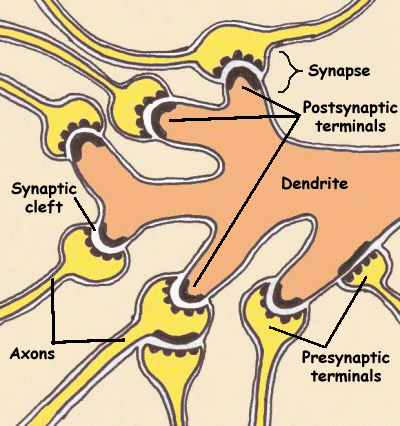Generally, it is easier for you to make a separate post for each question. However, I will try my best to attack each:
1. Technically, yes, genes on the Y chromosome can be sex linked. However, it is very limited since the Y chromosome is very small relative to somatic and the X chromosome. The few genes it does have are things like hairy ears etc. The most important gene on the Y chromosome is probably the
SRY gene
2. The difference between EPSP and depolarization (action potential) is best thought of using the below picture:

From this you can see that multiple axons can synapse with one dendrite. You already know that to have an axon potential you must reach a threshold which is a level of depolarization by the axon hillock that will trigger an irreversible action potential that will propogate down the post-synaptic cells (neuron) axon. Now in the above picture, each axon can either release a neurotransmitter that will bind to the post-synaptic membrane and open a Na+ channel to cause an EPSP or another axon can release a neurotransmitter that will bind to a receptor and open up a channel to hyperpolarize the post-synaptic cell called an IPSP. However, one of these EPSPs will probably not be enough to cause ENOUGH of a depolarization in the post synaptic cell to allow the membrane potential by the axon hillock to depolarize and cause a propagated action potential. Technically, every EPSP causes a depolarization of the post-synaptic cell, but not necessarily enough to reach a threshold by the axon hillock to yield an action potential. It is the
total summation of the EPSP's and IPSP's that determine whether an action potential will occur. Just to throw some theoretical numbers in there, lets say that each EPSP is +10 and each IPSP is -10. Also, let's assume you need to reach a -60 level to get an action potential by the axon hillock starting from -90 resting membrane potential. If in a given unit of time (second lets say) the post synaptic cell recieves 3 EPSP's and 1 IPSP, it would bring the membrane potential to -70 (+30, -10 = +20 -90). However, if in a given second the post synaptic cell receives 9 EPSP's and 6 IPSP's you will get an action potential because the membrane potential will have been brought to -60 (+90 - 60 = +30 -90 = +60). Cool final though, the reason the axon hillock is the point everyone talks about where the action potential starts is because there is a high density of voltage gated Na+ channels so that when the membrane potential reaches the threshold to open those channels by that area (axon hillock) you will get a relatively LARGE amount of Na+ coming in at that location to yield an action potential.
3. Absolutely not! There is no correlation between (+) and (-) with R and S, except if they are an enantiomeric pair and you know one of the pairs i.e you know one of the pairs is (+/R) so the other enantiomeric partner must be (-/S) or vice versa. Otherwise, there is no correlation.
4. I would say A, but I am not 100% sure. My reasoning is that the structures don't get any oxygen as intermediates from any other molecules except glucose. If they had said ATP, I might have gone for that. Again, not 100% on this though.
5. C, it has a ketone functionality, it is a carbohydrate, and has an alcohol functionality, but I am not 100% sure. I don't see any acetal functionality (RO-CH2-OR)
6. I think this question might be a semantics type of question. If I understand correctly, the osmotic pressure pulls water out of the capillaries and the hydrostatic pressure pushes water out of the capillaries. It is the
ONCOTIC pressure that pulls water back into the capillaries.


